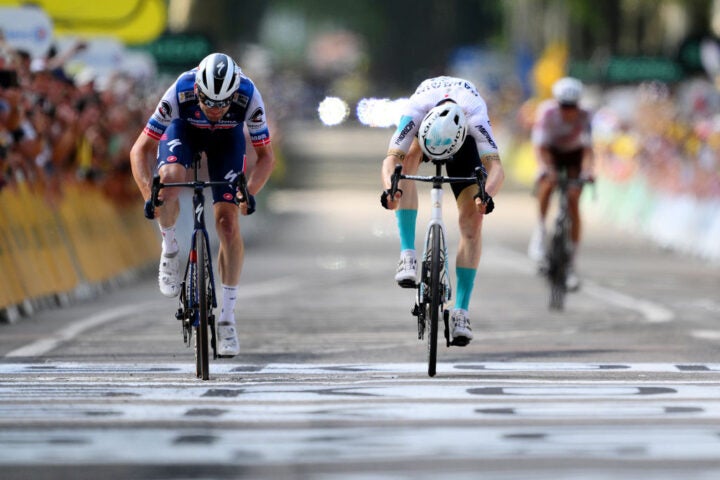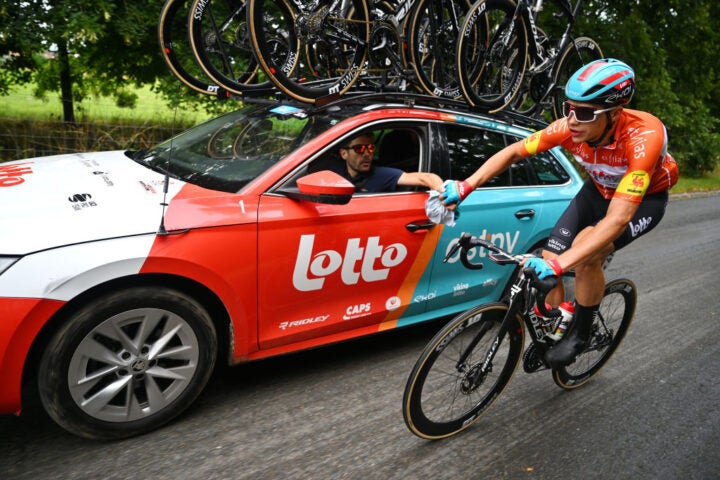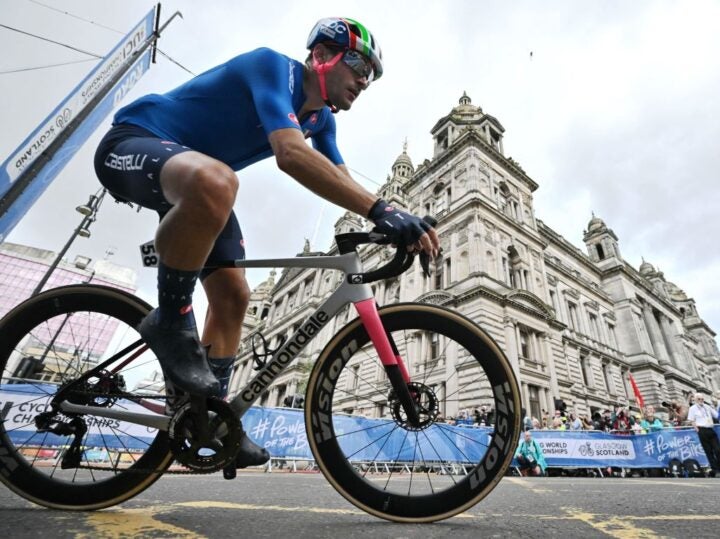What does Tadej Pogačar have in common with grizzled sprinter Alexander Kristoff and the swashbuckling Italian Alberto Bettiol? They’re all “durable.”
This tough trio win the hardest, most horrible races on the calendar thanks to their “durability,” the latest buzzword among the trainers of the world’s top riders.
“The big thing in training science at the moment is ‘durability’ – it’s a hot topic in research circles, and in terms of performance implementation,” UAE Team Emirates’ performance coordinator Jeroen Swart told Velo.
“Working on durability is becoming more and more a central part of the training program. You can’t afford to ignore it.”
Also read:
- Will Continuous Lactate Monitors revolutionize pro bike racing?
- How UAE Emirates is betting on A.I. for the next big training gain
Recent developments in the understanding of durability have made it possible to fine-tune a rider’s fatigue resistance like never before, and given coaches signposts toward an array of crucial training interventions.
And perhaps most importantly, it gives trainers insider information on podium potential.
“Durability is the ability to produce high power outputs following fatiguing work. The easiest way to quantify it is by ‘power at the amount of work you’ve done’ – so 2,500, 3,000, 3,500 kilojoules etc, depending on a rider’s level,” Swart said in a recent call.
“It’s basically an indicator of how hard they can go after five, six hours. And that’s what you want to know about when it comes to winning races.”
‘The missing piece in the puzzle’

A rider’s capacity to turn huge watts after hours of leg-sapping racing – their durability – is what helps them be the first over the line at the Paris-Roubaix velodrome or the summit finish of a Tour de France “Queen stage.”
It’s a performance trait that helped Pogačar dazzle De Ronde after six hours of racing, Bettiol light up the Glasgow worlds with his all-or-nothing solo raid, and Kristoff crush monument classics in the cruelest of conditions.
Durability is a term that’s floated around the endurance physiology community for decades, and a facet of performance that riders have attempted to improve for just as long.
But new studies are blowing a fresh understanding into the subject, and the learning could shift the way riders, runners, and the rest of the endurance elite train for decades to come.
“In competition, it’s what matters what you can do at the end of a race, not at the beginning. Yet we’ve seen for years that fresh performance values don’t predict fatigued values well at all,” Tudor Pro Cycling trainer and durability research brainiac James Spragg told Velo.
“Until now, a proper understanding of durability was always the missing piece in the puzzle of predicting performance.
“Our new insight into capacity when fatigued totally changes that.”
⚡️ Are you strong where it matters? ♂️
Durability emerges as a predictor of success in cycling races.
Kind of makes you wonder why athletes keep testing performance in a rested state only.
A thread on the emerging research on durability since 2020 -> pic.twitter.com/LfIEjwq1Zn
— Martin BS (@MedBonnevie) January 25, 2023
Team trainers have understood for years how to test for the watts a rider can thrash when they’re fresh.
But they’ve had no clue how fast they are when they’re fried. That is, until they see their athlete off the front or out the back on the Paterberg of Flanders or in the 5,000th altitude meter of a grand tour stage.
Like Spragg told Velo last week, durability was for decades the “missing piece” in the performance puzzle.
Until now.
“Knowing a riders’ durability like we can now means you can predict competition performance so much better than just looking at fresh data,” he said.
“And with what we’re learning in these new studies, you get a massive insight into how to train a rider too.”
Dialing in performance via durability testing

New studies into this must-know metric give staffers a new understanding into what makes different riders fatigue at different rates – and how those factors can be improved to unlock race-winning potential.
Spragg and his rabble of researchers learned how to correlate an athlete’s fresh performance ceiling [their aerobic engine or Vo2 Max] to their physical economy and fuel-burning efficiency to give an estimate of fatigued power.
“Understanding a rider’s durability can give us a lot of insight into other major components of physiology,” Spragg said.
“So if they aren’t durable but have high VO2 max, another component of their durability is missing. So that might be substrate utilization or economy. So then we can focus their training on those two things with nice easy volume, for example.
“Looking at durability then working backward helps figure out what we need to work on in so many areas that are important, for all aspects of racing.”
Pre-season training camps this winter have seen riders from across the peloton endure leg-sapping, fortitude-crushing durability tests.
The unfortunate victim completes power profiling ahead of the session, accumulates a race-level training load across four or five hours of pedaling, and then performs another power test when they’re pooped.
For example, here’s Arnaud De Lie’s Strava file from a durability testing session last month.

The bowling ball Belgian speedster rode for three and half hours – around ~2,500kj of work – before he performed a 20 minute all-out effort followed soon after by a 45-second sprint.
All in the service of a trainer better understanding his durability.
‘Durability is the new marker of elite performance’

So what’s the big deal with durability?
In short, it’s the new functional threshold power, Vo2 max, or power-to-weight ratio.
“Durability is the new marker of elite performance,” UAE performance chief Swart said.
“Younger athletes can typically produce amazing results in a lab on a VO2 test or lactate/power test, but it’s the durability part that they lack. And that’s really what arrives as an athlete matures into a champion.”
You can bet that a durability test formed a part of the entrance exam before UAE Emirates signed its newest young stars Antonio Morgado and Tour de l’Avenir winner Isaac del Toro.
“Finding a junior with good durability is a sign of huge potential,” Swart said. “And more experienced riders with high durability are those that all teams want on their classics teams, as grand tour leaders, all those things.”
Even if a team’s next teen sensation doesn’t blow the doors off with their durability, trainers now know what to do to dial it in.
The way VO2 max, efficiency, and economy intertwine to create durability gives coaches a four-point approach to training plans.
“Durability is such a big component of understanding overall performance and knowing what needs prioritizing that trainers just can’t ignore it nowadays,” Spragg said.
The better understanding of durability won’t revolutionize pro cycling.
But it’s likely to make the peloton several percentage points faster.
